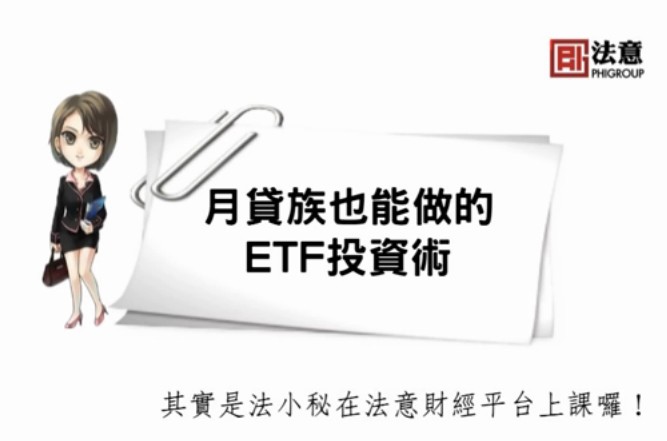
最近又開始看到一些媒體和研究機構又開始說日本債務步上希臘後塵,大家可以重溫3/23寫的文章。
日本接近零利率,利率下檔空間有限,也就是說債券價格上漲的空間有限(價格和利率成反比),理論上來說,做空的風險有限,利潤還不錯。但是日本長期通貨緊縮,利率依舊維持低檔,使很多放空的人都賠錢。雖然日本的債務佔GDP佔全球第一,但是只要國內投資人願意購買,就不會有違約的問題,不能跟希臘債務問題做比較。黃毅雄大師在2個月前告訴我,日本債務是自己家裡的事,不用擔心日本的債務問題,很多傳統的經濟學家拿著債務占GDP的比例亂比一通。假員外 與 假乞丐 / 黃毅雄 香港曹仁超在最近的專欄也說:今天美國政府已負債纍纍,進一步增加負債能力有限。睇番日本政府今天負債是GDP 227%仍然頂得住,主要是欠日本國民的債,而美國政府卻一如希臘是欠外國人的債。如你欠母親的債不用擔心,因為母親不會向你追債;如你欠別人的債,小心會給大耳窿搵上門。
CASSANDRA的詛咒是他的警告永遠都不會被人相信。相信日本政府公債市場末日的人命運不會太糟,只是預言的太早。(註:看對方向,但是時間點掌握錯誤可是會賠錢的)
The trade has seemed obvious for years. Japan has run continuous fiscal deficits and seen its debt downgraded by the ratings agencies. With its bonds yielding between 1-2%, the downside risk of a bearish bet has been limited while the upside potential has looked huge.
債券殖利率只有1-2%,也就是說作空的風險有限,作多的風險比較大。

But the trade has never worked. The Japanese government still enjoys the lowest borrowing costs in the world, with 20-year bonds still yielding just 2.1% and two-year bonds a remarkable 0.15%.
但是做空的交易沒有成功過。日本政府仍然享有全世界最低的借貸成本。20年期公債殖利率只有2.1%,2年期只有0.15%。
Why? Crucially, Japan has not been dependent on foreigners for finance. Just 4% of its bonds are owned by non-residents. Measly as those yields may be, they are still positive in real terms because of the country’s long record of deflation. Given that cash yields virtually nothing, and that the Tokyo stockmarket is around 75% below its 1989 peak, Japanese domestic investors have clearly felt that bonds were the best of a bad lot.
關鍵在於,日本並不依賴外國人來融資。只有4%是由境外的人所持有。雖然債券報酬率很低,但是實值報酬率仍然是正的,因為日本長期處於通貨緊縮。跟股票比起來,公債對日本國內投資人仍然是爛蘋果中最好的一個。

Stephen King, an economist at HSBC, argues that an odd process has occurred in which the size of the deficit has made businesses more cautious about the prospects for a future crisis, leading to slower growth and deflation and thus a continued appetite for government bonds.
匯豐的經濟學家Stephen King認為,這是一個很奇怪的過程,赤字規模讓企業對未來可能發生的危機更小心,導致低成長與通貨緊縮,延續對公債的偏好。
But Dylan Grice, a strategist at Société Générale, argues that the moment of reckoning may not be far away. He cites figures showing that ¥213 trillion ($2.4 trillion) of government bonds are due to roll over this year, equivalent to 45% of the country’s GDP. Meanwhile, as more citizens reach retirement age, Japanese households are no longer saving as they once did. As a proportion of disposable income, savings have declined from around 16% to 3% over the past 25 years. And the Government Pension Investment Fund, one of the biggest holders of government bonds, has admitted that it has no new money with which to buy more debt.
但是法國興業銀行策略分析師Dylan Grice認為,算總帳的日子不會太遠了。213兆日幣(2.4兆美元)的政府公債在今年到期且必須重新發行,金額相當於45%的日本GDP。同時,越來越多的日本人到了退休年齡,日本家庭儲蓄也不如過去。儲蓄占可支配所得的比例由過去25年的16%下滑到3%。日本政府公債最大的持有者,政府退休基金(Government Pension Investment Fund),承認他們沒有更多錢來買更多的公債。(註:日本郵政是日本公債最大持有者,總資產約300兆日元,其中75%以上的部位為日債。)

Furthermore, Mr Grice argues that one of the main sources of comfort for investors—that the net debt-to-GDP ratio is a lot lower than the gross figure because of assets owned by the Japanese government—may be an illusion. He doubts the valuations of some of those assets and argues that it is impractical that others could ever be realised.
It certainly seems likely that at some point the worst fears of the bears will come to pass. Debt servicing already uses up some 35% of government revenues. Imagine what that figure would look like if Japan paid the same level of yields as Germany (or worse still, Greece). A fair chunk of Japanese debt is owned by government agencies, a financing pyramid that will eventually collapse. Historically countries with very high levels of government debt have defaulted or, more usually, inflated the problem away.
就歷史來看,高債務的國家最後不是違約,就是靠通貨膨脹來解決債務問題。
The budget deficit is forecast to be 7.8% of GDP this year. The IMF reckons that Japan would need to tighten its structural deficit by 13.4% of GDP between now and 2020 in order to bring its debt-to-GDP ratio down to 80% by 2030. That is a bigger adjustment than would be required of any other country, even allowing for the fact that the IMF set other nations a target debt-to-GDP ratio of 60%.
日本今年預算赤字預估占GDP7.8%。IMF估計日本如果想在2030年之前把比例降到80%,就必須從現在~2020年將其結構性赤字降低GDP的13.4%。遠高於其他國家所需做調整的金額,更不用說IMF為其他國家設定的目標是將債務占GDP比例為60%。
But given that these problems have been building for 20 years, why would they lead to a crisis now? Fitch, one of the leading rating agencies, places Japan top of the list in terms of financing flexibility. The agency uses factors such as net annual debt issuance (as a proportion of the total), size of the economy, the proportion of debt held by non-residents and the stock of financial assets to determine its rankings. By these measures Greece, Portugal and (more surprisingly) Australia are at the bottom of the table.
信評公司惠譽將日本的融資彈性評為世界第一,希臘、葡萄牙、和澳洲的評等最差。
And the huge amount of Japanese debt rolling over this year need not be a problem. Investors will simply recycle their existing holdings. Takahira Ogawa, a sovereign analyst at Standard & Poor’s, thinks there is more scope for the Bank of Japan to buy government debt, as central banks have done elsewhere.
今年日本必須要重新發行的巨額公債不一定會是問題。投資人可直接將到期的公債換個到期日。標準普爾的政府公債分析師Takahira Ogawa認為,日本央行仍可購買政府公債,正好像其他他國央行的央行一樣。
Of course, such measures just postpone the evil day. The crisis will surely arise when Japan becomes dependent on foreigners for finance, or if a sharp rise in inflation or a sudden slump in the currency causes domestic private investors to take fright. But since the country is still running a current-account surplus, the yen is trading at 90 to the dollar (compared with 124 in June 2007) and deflation is forecast for the rest of the year, the apocalypse seems unlikely to occur in 2010.
只有當日本的"融資變成依賴外國人",或者大幅通貨膨漲和貨幣突然大貶導致境內私人投資者拋售公債,危機就會發生。但是日本仍有經常帳盈餘,美元兌日幣仍有90(相對於2007年6月的124),並且今年預估仍仍然會通縮,日本末日不太可能發生在2010年。
虛構的日本債務危機
2010-03-18 工商時報 【陳穎芃、林佳誼】
研究機構Arcus Research駐東京分析師塔斯克(Peter Tasker)近日於金融時報撰文表示,日本的債務危機或許只是業界對表面現象的錯誤解讀,並不代表著日本一定會步上希臘等國的後塵。
塔斯克表示,凡是經歷過全球信貸危機的人,勢必打從心裡認定接下來的幾年內,各國將陷入一連串經濟動亂,於是近期美元走跌、歐元區分裂,甚至是日本政府的赤字問題自然也被渲染成各國「經濟末日」(end times)。
在各界眼中,日本陷入債務危機的事實相當明顯。今年日本公債占政府預算來源的比重首次高於稅收,且日本政府總負債占GDP比例已經高達200%。未來12個月內,日本政府為償債所發行的新債總金額將高達210兆日圓,相當於義大利負債總額。
於是近期包括標普(S&P)在內等信評機構已陸續調降日本債務評等,各大投資機構也預期日本經濟即將瓦解。
年初至今,歐洲公債市場已經籠罩在主權債務危機的恐懼之下,但日本公債殖利率卻未出現明顯波動,依舊維持在1.2%至1.4%之間。過去10年來,日本公債殖利率也只有少數幾次短暫上升到2%以上。
單從殖利率來看,日本堪稱全球信用評等最優良的國家。若真要追溯歷史記載的話,日本公債利率打從巴比倫時代開始就是全球最低,因此如今外界對日本債務危機的解讀只有2種可能,其一是日本公債市場操作錯誤,其二是外界對債務危機的理解本身就不正確。
市場確實有可能操作錯誤,但已開發國家的公債市場理當操作謹慎,況且市場價格就算有誤,也不太可能持續10年之久。
事實上,自從1980年代日本經濟的泡沫破滅以後,該國負債占GDP比重與公債殖利率就呈現出一種反向關係─日本政府發售愈多債券,其付出代價就愈低。
日本公債買家包括操作財務槓桿的企業、平衡風險的金融機構,或是不喜股票房產的個別投資人,卻絕少有投機者。他們有充分理由購入日本公債,尤其是通縮的事實更在無形中為日幣或債券持有人帶來一筆免稅的收益。
這意味著公債的運作比我們想像得還要費解,負債占GDP比重並沒必然導致經濟危機的魔力。
歐元區幾位罪人的債務比重皆遠不如日本,卻麻煩纏身。問題的重點在於與負債程度相應的融資能力,這一點則需視該國儲蓄與儲蓄者的習性而定。
過去20年間,日本民間不僅大量注資於本國日益膨脹的公共赤字,對於美國公債的投資也頗為可觀。
日本儲蓄盈餘目前多集中於企業界而非一般家庭。而由於日本企業現今產能利用率不高,未來幾年當會降低資本投資,這代表其持有現金會透過購買孳息金融資產的方式,流向其它經濟部位。
這代表日本諸事大吉嗎?差之遠矣。日本公債殖利率在低點盤旋正是其通縮弊病的一項產物,侵蝕著日本經濟的五臟六腑。通縮一日不去,負債占GDP比重注定會再創新高。
弔詭的是,日本政壇決策者卻更關注如何降低公債利率,而非如何讓經濟重新趨向通膨、增加政府稅收並降低這項經年累月的社會成本。有朝一日其政策必須轉向,屆時公債利率也會隨之上揚。
公債利率上揚絕非敲響日本經濟喪鐘,反倒是象徵著其經濟重新開始步向健康。




 留言列表
留言列表
